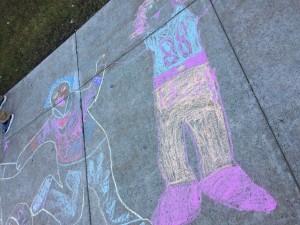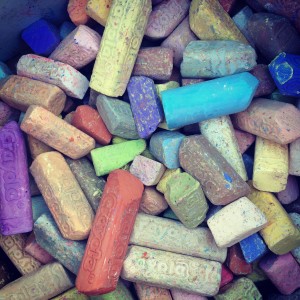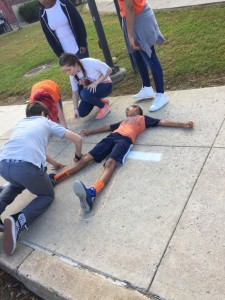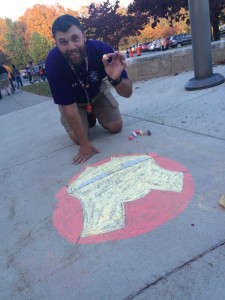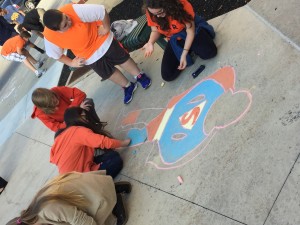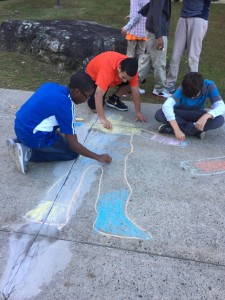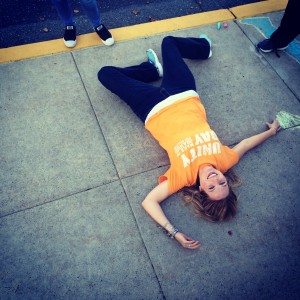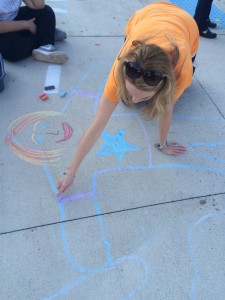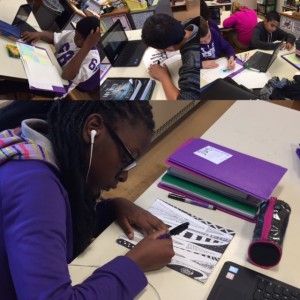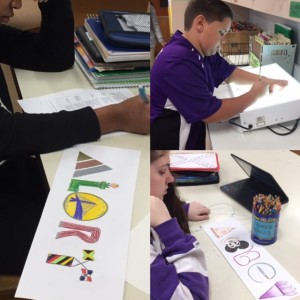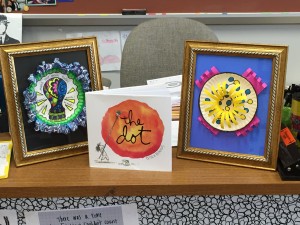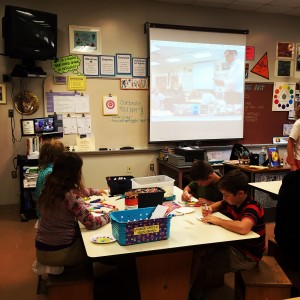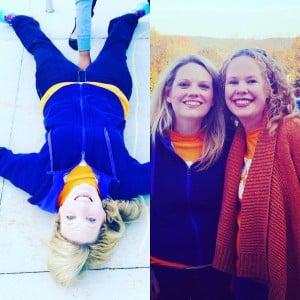On Wednesday, October 19, 2016, J.T. Lambert Intermediate School, recognized “Unity Day”. This is a designated day within our school that promotes collaborative activities and invites students to take a pledge to stand up to bullying. Our students and staff are encouraged to wear orange and participate in group activities throughout the morning. These activities include class door decorating, paper “pledge chains”, walking the track and our annual chalk mural.
Last year, the art department decided to develop a creative project that would allow students to work collaboratively while expressing the message of Unity Day. My smART partner and I brainstormed different ideas that would demonstrate to students how art can be used to make a difference, take a stance on the bully topic and get people thinking about their role in the problem. We decided that a large-scale chalk mural would be a fun, interactive way for students to share a message and also create a huge impression on those who saw it.
While students knew the meaning behind Unity Day and that it was a day to “take a pledge against bullying”, we wanted to get students thinking about how they could do that every day, not just on Unity Day. We needed to learn some statistics on the impacts of bullying to really make our message important to our students. I did some online research and found out that 1 in 4 students will experience bullying between kindergarten and twelfth grade. This was a number that stuck with me. My students sit at tables of 4. Often times students are put into groups of 4. Students can easily identify themselves amongst a group of 4 friends. Students would understand that this was a number that impacts them every day.
My smART partner and I came up with the mural theme based on this statistic. We would have the students work in groups of 4, to really help our statistic resonate. We were going to have students trace the outline of a student’s body and repeat that step 4 times. Our intent would be to create a visual “paper doll chain”. Students would then decorate 3 of the bodies and leave the fourth one blank. This “blank body” would symbolize the victim. We shared this theme with our students in art class in order to prepare them for Unity Day.
While many of the students were excited to get right to work on the chalk mural, other students took some “extra-support”. It was interesting observing which groups immediately decided amongst each other who would lie on the ground, who would trace and who would start decorating the bodies. Other groups stood around, complained about having to lie on the ground, etc. Fortunately, we had extra teachers assisting, so we were able to help the groups divide up the roles, provide some encouragement and direction as to where to work and give the students some ideas about patterns and designs to make the murals stand out. Some teachers even got into the chalk mural themselves! Here is our Physical Education teacher, Mr. McCracken, showing off his art skills…
The students rotated through the chalk mural project in groups, accompanied by their homeroom teachers. The homeroom teachers assisted by having the students already grouped into “fours”, so we could quickly explain the project and the statistical basis. We had a visual to show, as well, just in case students couldn’t envision our idea. Throughout the school day, we took our art classes outside to continue the mural project, as well as fix up some “bodies” that may have lacked color or didn’t look complete. We even added the written statistic, “1 in 4”, as well as words of kindness, to embellish the mural project.
It was a beautiful Fall day to spend outside with the students. The feedback we received from our administrators and other teachers in the building was very positive. The kids seemed to really “get” the message and we furthered the conversation in art class by showing a couple of great “You Tube” videos that talked about overcoming the experience of being bullied, as well as a powerful video on Cyberbullying. The students shared personal stories and talked about ways they can stand up when they see a peer being bullied.
The chalk mural serves as a visual reminder of the alarming statistic of “1 in 4”. Hopefully our students will be a little kinder to one another and keep in mind that they can be part of the solution. Finally, we extended our art curriculum outside of the classroom and demonstrated that art can be a powerful voice that can be used to create awareness and promote change.
Hopefully, my students will look back on this day and remember their art teacher for providing a memorable experience to empower them to be the change in this world and make it a more positive place. After all, we ALL can make a difference and help to promote unity in our school, community and this great, big world we live in.
-Mrs. S

